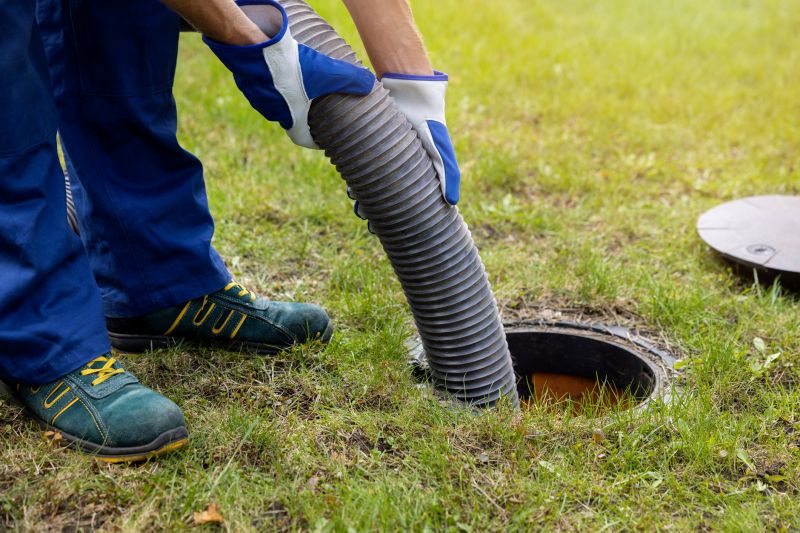Expert Picks For Drainage Service Maintenance Equipment
A curated list of essential tools that ensure thorough and efficient drainage system maintenance.
 Effective drainage is essential for maintaining the integrity of residential, commercial, and municipal properties. Proper drainage systems help prevent water accumulation, reduce the risk of flooding, and protect foundations from water damage. In Racine, WI, where seasonal changes can lead to fluctuating water levels and heavy rainfall, having reliable drainage products is crucial for property owners and maintenance professionals alike.
Effective drainage is essential for maintaining the integrity of residential, commercial, and municipal properties. Proper drainage systems help prevent water accumulation, reduce the risk of flooding, and protect foundations from water damage. In Racine, WI, where seasonal changes can lead to fluctuating water levels and heavy rainfall, having reliable drainage products is crucial for property owners and maintenance professionals alike.
Top Overall Option
Flexible Corrugated Drainage Pipe System
A versatile and adaptable drainage pipe system designed to accommodate various landscape and construction needs. Its flexible nature allows easy installation around curves and obstacles, making it suitable for a wide range of applications. Compatible with different fittings and connectors, it offers a durable solution for directing water away from structures and landscaped areas.
Types of Products For Drainage Service
Underground Drainage Pipes
Pipes designed for subterranean water redirection, often made from PVC or corrugated plastic, suitable for long-term drainage solutions.
Surface Drainage Grates
Grates used to cover surface drains, allowing water to flow into underground systems while preventing debris entry.
Catch Basins
Collection points that gather surface water and direct it into drainage pipes, often equipped with removable grates.
French Drains
Perforated pipes surrounded by gravel or rock, installed underground to redirect groundwater away from foundations.
Channel Drains
Linear drains installed along driveways, patios, or walkways to quickly channel surface water away.
Stormwater Management Systems
Comprehensive solutions that include multiple components like pipes, basins, and filters to manage large volumes of runoff.
Drainage Fittings and Connectors
Various fittings to join pipes and adapt systems to specific site conditions.
Sump Pumps
Pumps used to remove accumulated water from basements or low-lying areas, preventing flooding.
Waterproof Membranes and Barriers
Materials that prevent water infiltration into basements and foundations, often used in conjunction with drainage systems.
Erosion Control Blankets
Protective coverings that stabilize soil and reduce erosion around drainage installations.
Perforated Drain Tiles
Drainage tiles with perforations designed for installation in French drains or landscape grading.
Drainage Pumps
Portable or installed pumps that facilitate water removal from flooded areas or basements.
Inlet Vortex Covers
Protective covers for inlets that prevent debris from clogging drainage systems while allowing water flow.
Permeable Pavers
Paving materials that allow water to pass through, reducing runoff and promoting natural absorption.
Drainage Baskets and Strainers
Devices that prevent debris from entering drainage pipes and causing blockages.
Drainage Trenches
Pre-formed or excavated channels designed to direct water flow efficiently across large areas.
Popular Choices
Widely used for its adaptability and ease of installation in various landscape and construction projects.
Effective for managing surface runoff in driveways and parking lots, preventing pooling.
Popular for basement waterproofing and yard drainage, combining perforated pipe with gravel.
Commonly installed along walkways and patios to prevent water accumulation.
Trusted for removing water from basements and low-lying areas, especially during heavy rainfall.
In demand for larger projects requiring comprehensive runoff control solutions.
Popular for underground drainage and soil stabilization projects.
Valued for their portability and efficiency in emergency water removal.
Chosen for their ability to reduce surface runoff and improve landscape aesthetics.
Essential for customizing and expanding drainage systems to fit site-specific needs.
Popular in slope stabilization and landscape restoration projects.
Commonly used to prevent debris clogging in surface drainage systems.
Frequently installed in basements and foundations to prevent water infiltration.
Favored for large-scale landscape grading and water diversion.
Drainage solutions encompass a wide range of products designed to redirect water away from structures and landscape features. These include underground piping systems, surface drains, catch basins, and specialized fittings that work together to ensure water flows efficiently. Selecting the right products depends on factors such as property size, terrain, water flow volume, and specific drainage challenges.
Installing effective drainage systems can also help mitigate issues related to soil erosion and landscape degradation. Properly designed drainage components can be integrated into new construction projects or used to upgrade existing systems. Regular maintenance and inspection of drainage products are recommended to ensure continued performance, especially after severe weather events.
Whether addressing localized yard drainage problems or implementing comprehensive stormwater management solutions, understanding the variety of available products can assist property owners and contractors in making informed decisions. The following sections highlight the top options and trending products to consider for effective drainage management in Racine, WI.
Key Buying Considerations
- Assess the volume of water that needs to be managed to select appropriately sized systems.
- Determine whether underground, surface, or combined drainage solutions are best suited for your property.
- Consider the material of pipes and components for durability and compatibility with local soil conditions.
- Evaluate ease of installation, especially if DIY or professional installation is planned.
- Check for compatibility between different system components and fittings.
- Identify potential obstructions or obstacles that may influence pipe routing and placement.
- Account for local weather patterns and seasonal variations that could impact drainage performance.
- Review maintenance requirements and accessibility for cleaning or repairs.
- Ensure that surface drains and grates are rated for the expected foot traffic or load capacity.
- Think about future expansion or modifications when selecting system components.
- Prioritize products with appropriate certifications or standards for safety and performance.
- Consider integration with existing landscape features or infrastructure.
- Evaluate the cost versus longevity to determine the most economical long-term solution.
- Identify any local codes or regulations governing drainage system installation.
- Plan for proper outlet locations to prevent water from pooling or causing erosion.
